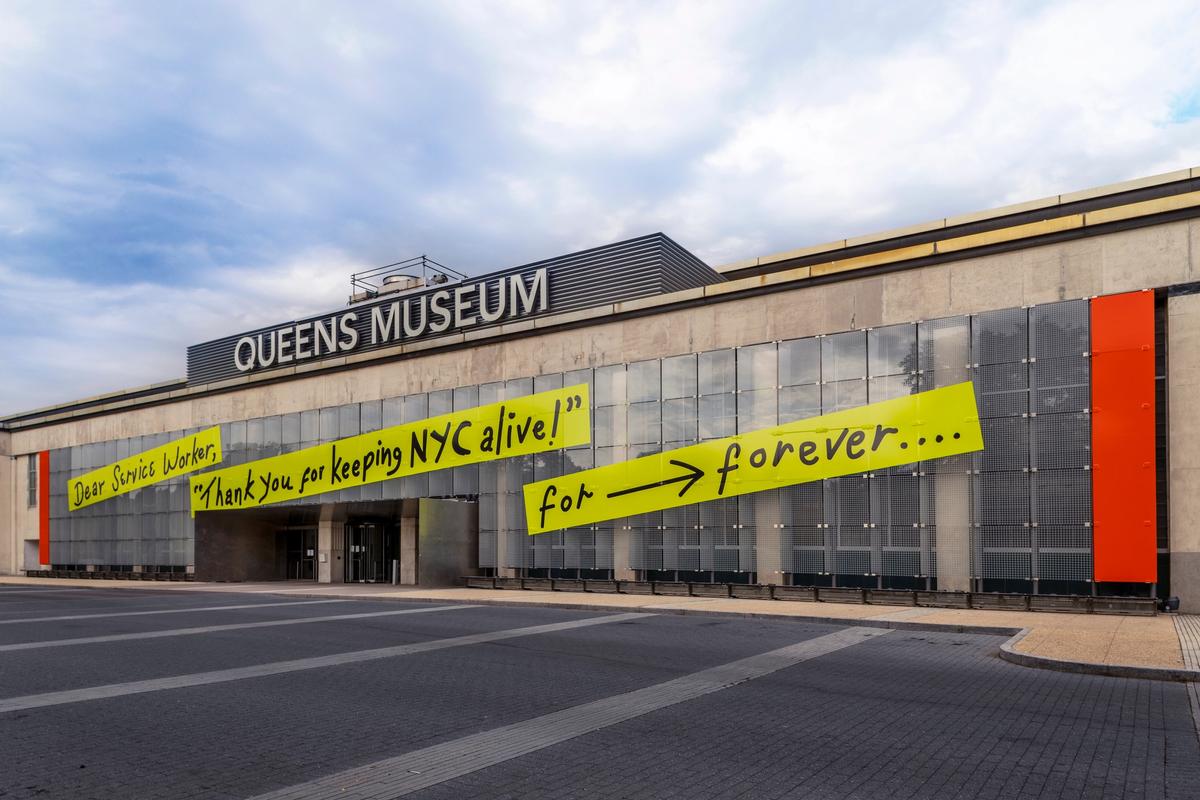The Queens Museum in New York’s Flushing Meadows-Corona Park has entered the final phase of its transformative expansion project after being awarded a $26.4m grant from the city last month.
The museum completed the first phase of the project in 2013 after a five-year closure, adding 50,000 sq. ft of galleries and educational spaces. The second phase, due to be completed in 2024, will add 2,600 sq. ft of art storage and conservation facilities, which do not currently exist on-site, and a 5,500 sq. ft educational centre for children and the broader community.
The building was one of the few permanent structures developed for the first New York World’s Fair in 1939-40, and was used as the site of the United Nations General Assembly from 1946-50 before it was renovated to host the 1964-65 World’s Fair. The space was converted to a museum in 1972 but was never fully structurally optimised to be a museum space, according to Sally Tallant, the Queens Museum's president and executive director since 2018.
“There’s a huge amount of the building that is un-renovated or un-utilised—which most visitors now don’t notice because it’s all been behind walls for decades—so this funding will allow us to finally bring the whole building into full public use and public value,” Tallant says.
She adds: “The educational centre that we are building has been called a children’s museum for planning purposes but will be a multi-lingual, multi-use and intergenerational space that centres on art, architecture and education. We want to broaden our community work and how families can engage with us, and this provides a destination to do that on-site.”
The museum is best known as the steward of the installation Panorama of the City of New York, a three-dimensional model of the five New York City boroughs that was conceived by the American designer Robert Moses for the 1964-65 World’s Fair. It holds a collection spanning around 13,000 pieces, comprising various objects and documents related to the World’s Fairs and also contemporary artworks stored in an auxiliary site.
“We have this growing collection but no proper art storage, so that has been a long-time plan for the museum,” Tallant says. “We’re desperate to make sure that we look after the work that we’re entrusted with.”
Over the last year, the museum has also worked to refine and refresh its acquisitions policies in an effort to be “more intentional about how things come into our care”, according to Tallant, which includes a focus on living artists. Some major recent acquisitions include components of a work titled Public Record (2020) by the artist Julia Weist, which examines the government’s relationship to art and artists through public records. Other recent acquisitions, either through purchase or donation, include works by artists like Mark Dion.
The Queens Museum is notable for its engagement with the local community. It is located in one of the most ethnically diverse areas of New York City and serves as a Covid-19 testing site and a voter registration site, as well as a "cultural food pantry" operated in partnership with hunger-relief organisation La Jornada that has provided food and art materials and activities for more than 47,000 families in the hard-hit Queens neighbourhood amid the pandemic last summer.
In February this year, the museum launched an 18-month initiative called the Year of Uncertainty to brainstorm how it can better serve the community and address social justice issues that have been heightened since the onset of the pandemic. Seven artists-in-residence, twelve co-thinkers—including Cas Holman, Sable Elyse Smith and Kenneth Tam—and several organisations, from healthcare to education providers, are collaborating on the project, which will culminate with a series of installations and public conversations next year.
“The museum has been working for some years on thinking about how we can be a more ‘situated’ museum and leverage the resources we have to make them available to the community and artists,” Tallant says. “This moment of pause actually turned the building into a big learning experiment that highlighted that this uncertainty that we’re enduring is not going away. It prompted us to think deeply about what we—and all museums—can do.”


